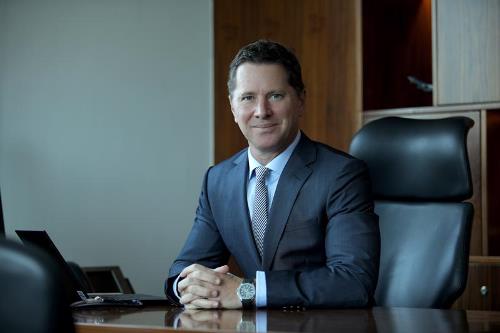HSBC: Two scenarios for Viet Nam’s economy in 2021
VGP – Viet Nam’s economic outlook by year end very much depends on the effectiveness of the vaccine rollout together with the effective and timely re-opening of the economy, said Tim Evans, CEO of HSBC Viet Nam on September 13.
 |
|
Tim Evans, CEO of HSBC Viet Nam |
Scenario 1: GDP growth in the range of 5-5.5 percent, depending on the speed and effectiveness of the vaccine rollout, the re-opening of the economy and the recovery and resumption of major export markets, given the challenges posed by Delta variant.
Scenario 2: If the vaccination programme is not fast enough and lockdown and social distancing continue to be lengthened, there will be more adverse impact to the economy and there will be increased pressure on supply chains and GDP may only reach 3.5-4 percent.
“Either scenario, the economy needs to be re-opened, though in a cautious and systematic way”, stressed Tim Evans.
As the economy starts to reopen, supply chain challenges should subside, orders will resume and FDI should resume its cadence given stable government with consistent policies, hardworking/resilient workforce, large number of FTAs and a commitment from the government to spend 7 percent of GDP on continuing to develop infrastructure, he added.
Despite the current environment, the CEO of HSBC Viet Nam supposed that the country remains a highly attractive investment destination in the medium term. This is based on the country’s robust fundamentals which many investors will look through the present COVID-19 volatilities.
As more economies start to open up in the region on the back of large scale vaccine rollout, this coupled with the ongoing demand from the Europe and North America should see positive impact on the exports of technology related products, machinery, footwear, garments, furniture, food, and agricultural products.
Meanwhile, Tim Evans highlighted that the pandemic has accelerated the trends of automation and digitalization and therefore Viet Nam stands to benefit from this as a significant global producer of tech-related products.
Viet Nam’s strong fundamentals remain and the country has built an enviable position in the global supply chain over the past years through its set of FTAs.
Strong foreign currency reserves coupled with a stable currency, inflation being under-control, continued strong FDI inflows with an emphasis on the manufacturing sector all position Viet Nam will for the future. As a result, HSBC is forecasting GDP growth of 6.8 percent in 2022 with a bullish outlook for the mid and long term.
“There will be opportunities, there will be economic growth, Viet Nam will bounce back and once again prove that when it comes to overcoming a challenge or obstacle, no one does it better than Viet Nam”, the CEO of HSBC asserted.
By Thuy Dung

